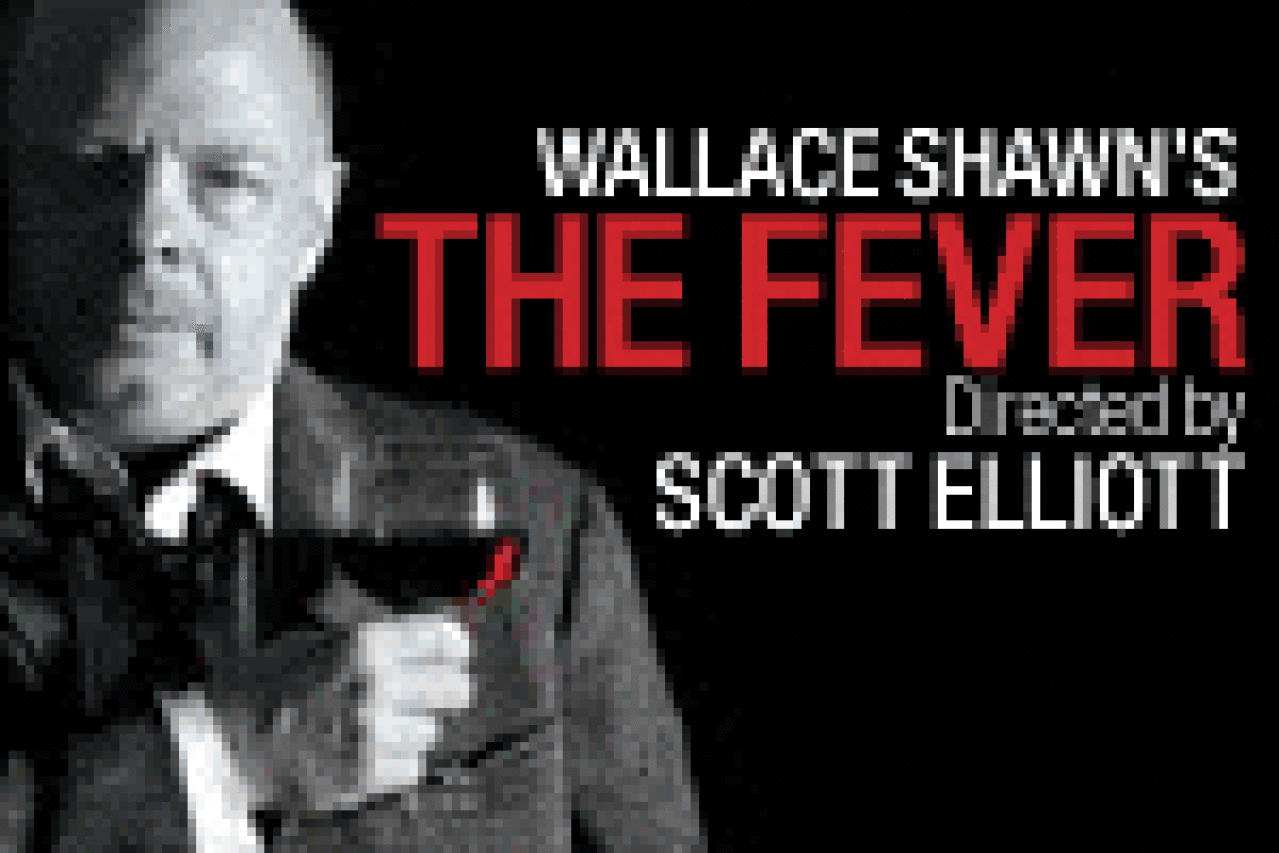The Fever

(© Carol Rosegg)
Some say the global population is divided into the haves and the have-nots. Wallace Shawn seems to think so, since one of his recurring themes — possibly his most insistent — is the guilt of the haves. Nowhere does he expound his position more masterfully than in his monologue The Fever, currently being revived by The New Group. It’s as if Shawn were playing a cello of rare quality. Throughout the not-so-subtly accusatory elegy, he delivers some exquisitely constructed prose in which harshly descriptive phrase follows harshly descriptive phrase.
The set-up couldn’t be simpler. After sharing an on-stage glass of champagne with those audience members who care to indulge before taking their seats, Shawn settles into a chair on Derek McLane’s notion of the kind of study that a man like Shawn, here identified as The Traveler, would have. The speaker explains that, some time in the not too distant past, he awoke shivering from sleep in a country he never names and shortly found himself in the adjacent cold bathroom, vomiting and watching a large insect scurry into a hole too small for it.
He soon begins elaborating on his thoughts. They deal with how, as a man of privilege — one raised to enjoy, even “celebrate,” life — he cannot stop himself from being deeply disturbed by the plight of the poor. He’s profoundly aware that, in the Biblical phrase, the poor are always with us. He’s troubled at the thought that his not doing anything constructive about this situation taints his various daily luxuries.
During the course of Shawn’s elegant ramblings, he sidles through topics like sex, the value of money, and “the fetishism of commodities.” He floats Marx-hued theories of sharing the wealth. In sudden contrast, he makes cynical arguments for getting rid of the poor. Throughout, he alternates — to no apparent avail –between figuratively flagellating himself and attempting to forgive himself. Occasionally uttering a witty phrase to leaven the pessimism, he still cannot accept his rationalizations or his justifications. Though ostensibly recollecting his experiences in arm-chair tranquility, he’s feverish with guilt and shame.
Shawn’s intention is clear. While impugning himself, he’s also implicating his audience — the very people with whom he’s just shared that champagne. Indeed, this tippling session echoes the performance piece’s origins in private homes and hotel rooms, where Shawn invited friends and friends of friends to chat before he eased into his sleek rant. In compulsively revealing his narrator’s spiritual failing, he exposes the spectators’ complaisance as well. While he may not be happy about his thesis, he’s irrevocably drawn to it; look at his brilliant, later Designated Mourner, which is about a yet weaker-willed man spewing venom in another unnamed country.
By now, the round-faced, round-bodied Shawn has probably performed The Fever hundreds of times, which accounts for the improvements in it as well as some of its drawbacks. More a writer who performed than a polished actor in his earlier on-stage and on-screen days, Shawn has whipped his technique into formidable shape. In this somewhat trimmed re-do, the use of his voice is proof of his progress. Only in Vanya on 42nd Street and in the recent New Group production of Hurlyburly has he exhibited such command of his formidable talents.
While much has been gained, something has also been lost under Scott Elliott’s direction. In its previous incarnations, The Fever was presented virtually unadorned. Not so this time. If my memory serves reliably, the earlier set for Shawn’s monologue consisted of nothing more than a chair, and he wore casual clothes. Now, ensconced in McLane’s tasteful surroundings, he’s more dapper in jacket and tie.
Moreover, while expert lighting designer Jennifer Tipton has been called in, the lighting is unengagingly obvious. The two lamps on stage dim and brighten repeatedly; sometimes Shawn can barely be seen, sometimes he’s in full light. The apparent aim is to make the monologue more theatrical, but the effect is that the shifting illumination cues what our emotional response to each segment ought to be. Shawn doesn’t need any such help. The story he’s compelled to tell needs no explication or supplementary prompting. The Fever is contagious enough on its mesmerizing own.











